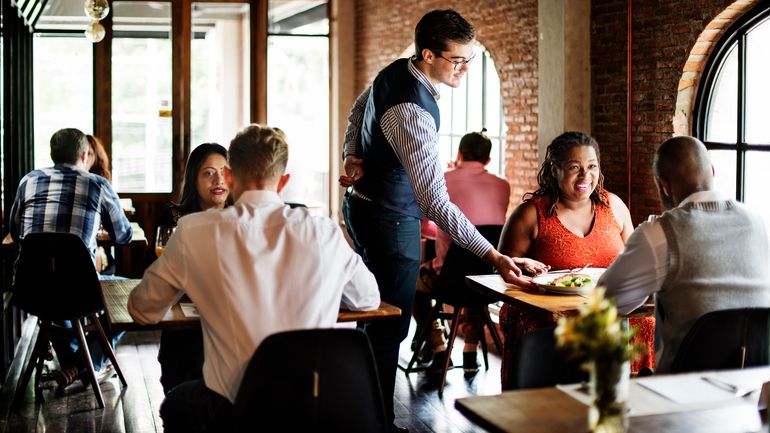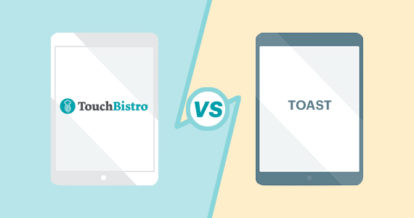A high no show rate can break a restaurant.
When Toronto restaurant owner Darcy MacDonell experienced 97 cancellations and no shows in a mere 24 hours, he took his frustration to social media. Urging people to #RespectTheRestaurant, he posted a graphic that pleaded with diners to honor their reservations with a #StopNoShows awareness initiative.
The campaign spread like wildfire across the country and around the world. The reason? No shows are an industry plague.
And, since many restaurants are now running at reduced capacity, these reservation no shows are more detrimental than ever. With fewer tables and tighter restrictions around reservation times, restaurant owners can’t afford to have bookings just not show up.
But no shows don’t have to be a thorn in your side. There are tried and true strategies restaurant owners use to reduce these absences at their venues.
In this article, we’ll break down the impact of no shows and provide strategies to help you minimize them at your restaurant to ensure you’re getting the most out of every reservation.
What Are No Shows – and Why Do They Matter?
If you take restaurant reservations, you’ve most certainly come up against no shows.
But what are they?
No shows are the diners who half-heartedly make a reservation but don’t honor it for whatever reason. Maybe something comes up that prevents them from coming, maybe they decide to change their plans at the last minute, or maybe they completely forget they had a reservation. No matter why they don’t come, no shows cost restaurants precious revenue.
Quick No Show Math
But how quickly can these no shows add up?
Let’s say you have 100 seats in your restaurant and 50% of your average nightly volume comes from reservations versus walk-ins. The average spend per person sits around $30, which means even if 10% of those reservations were no shows, it could cost you $150 per night. That’s over $1,000 a week!
It gets worse.
The generally accepted no-show reservation rate in the industry actually hovers around 20%. In the above scenario, it’s more likely that you’re losing out on $300/night – over $2,000 a week!

11 Proven Strategies to Reduce No Shows at Your Restaurant
With numbers like that, you can see why MacDonell tried to start the #StopNoShow movement.
With 20% of reservations resulting in no shows, it may seem tempting to become a restaurant with walk-in seating only and say goodbye to the risk. But there’s a reason more restaurants aren’t doing this – reservations can bring in huge profit for your business!
Here are ten methods that are proving effective for preventing no shows:
1) Use Reservation Software
Taking restaurant reservations over the phone and marking them by hand in a date book was once the only accepted way of keeping track of your diners. But most people don’t do anything by hand anymore.
And for good reason.
When you use an automated restaurant reservation system, you get added benefits like access to real-time booking numbers, eliminating human error and reducing the workload on staff. Let them focus on serving your guests instead of taking reservations over the phone!
Many restaurants partner with a third-party reservation software that integrates with their website – or even their restaurant POS! Systems like TouchBistro Reservations have all the features required to manage bookings without any heavy lifting from your front of house or management team. Customers can make a reservation online, through a mobile app, by email or text.
Choose a reservation system that:
- Lets customers book online from multiple platforms like Google, a web discovery app, your own website.
- Allows you to collect and manage contact info when guests book a table, for contact tracing purposes.
- Helps you adjust your floor plan to meet reopening regulations, while getting the most of your available restaurant seating. You can set your system to stagger seat times, making tables available only at certain times for specific durations, such as two hours per reservation. Having these preassigned turn times will help you maintain the flow of guests.
- Automates everything for you and your customers. This includes automatic SMS and email reminders for customers and syncs with their calendars.
- Lets guests curate their own experience by allowing them to easily search, book, modify, and manage their reservations through your web or mobile platforms.
- Customizes reservation notes for allergies, dining preferences, or special occasions to help turn a first-time guest into a regular and provide loyal customers the kind of signature experience that keeps them coming back.
- Connects with guests in real-time with two-way SMS communication, so they can confirm, cancel, or even let you know if they will be a little late.
2) Make It Easier to Cancel
This might seem counterintuitive, but one way to combat a no show is to make it simple for guests to cancel ahead of time. If they’ve booked a table through your restaurant reservation software, it’s easy to cancel it without having to make a phone call.
This is especially important right now – you want diners to be able to easily forfeit their table if they’re feeling sick. If it’s hard to cancel, you may have people coming in even remotely under the weather, and one table is not worth the risk to your other customers, staff, and business.
If guests choose to pick up the phone, make it easy for them to reach you by ensuring you answer your phone or have a voice mailbox that allows them to leave a message.
Another method for diners to cancel is through a system that lets diners SMS (i.e. text) directly with your restaurant. When you make canceling hassle-free, people are more likely to take the time to do it instead of simply not turning up.
Giving diners a simple way to cancel if they can’t make it gives you the chance to offer the table to someone who can – either a walk-in or a booking. And, if you have reservation software, the system will automatically make the table available online, so eager diners can book and you can prepare for service.
3) Offer a Reservation Window
Another way to streamline the reservation process for your guests is to offer a grace period that holds their table in case they are a little late. When you provide a little flexibility, those diners who may be stuck in traffic or held up at work will know they can still make their reservation if they get a move on. This is better than giving up and becoming another no show statistic.
Be sure to add this grace period – 15 minutes is reasonable – to your online reservation system, confirmation email, or reminder call so diners are aware that it exists! You may even choose to extend it if the guest calls or texts in advance to let you know they’ll be late. Having open communication is key!

4) Follow Up with No Shows
Most restaurant owners grit their teeth when a no show fails to arrive and leave it at that. But why not turn your no shows into an opportunity to invite a diner back?
With TouchBistro Reservations, you can easily pull reports on your no shows, as well as guest profile info, which they filled in when they set up the reservation in the first place. Use these to decide how and when you want to get in touch (i.e. reach out on the phone or set up automatic emails) and let them know you’d love to have them back.
Send a message like, “We missed you at dinner last night. Would love to see you sometime soon!” You can even include a link right to your reservation page.
When you communicate with no shows that you noticed their absence and explain why it matters, they’ll feel special and might come back at a later time!
5) Make Courtesy Calls or Send Reminder Texts or Emails
Some third-party systems, like TouchBistro Reservations, automatically send reminders by SMS or email. This is helpful for busy restaurant owners because it provides a layer of assurance that guests will arrive as planned – especially on busy holidays like Mother’s Day and Father’s Day. This helps you and your guest stay on top of restaurant bookings – no forgotten dinner plans!
If you don’t use an automated system – or if you want to leave a personal touch to be sure they get the message – consider calling your guests 24 hours ahead to remind them of their reservation. You can use this opportunity to begin their guest experience on a high note by asking if there’s anything special you can do for them, reminding them of any extra safety precautions you’ve been taking to ensure a safe dining experience, and letting them know you’re eager to serve them.
6) Take Credit Card Information for Every Reservation
Restaurants that experience frequent no shows have begun to take a credit card number with every reservation, similar to hotels. If a guest fails to arrive, they may even charge a cancellation fee. If people expect a charge if they don’t show, they are more likely to make it there on time – or cancel with enough notice.
Platforms like TouchBistro Reservations come with the option to collect credit card information, where the credit card only gets charged a set fee for no shows. If your no-show rate is high, you could set up no-show fees on a trial basis. If this strategy reduces your no-show rate without negatively impacting your sales, you can keep using it. If not, just remove the option.
To turn this possible charge into a way to drive traffic back to your restaurant, you could convert any cancellation fees into a gift card for the guest’s next visit to your restaurant, so a) they aren’t paying for something they can’t use and b) they’ll be encouraged to come back eventually – they’ll want to make use of their gift card!
7) Take a Deposit for Every Reservation
A Vancouver restaurant owner began charging $10 for every reservation after tracking a 50% to 60% no-show rate at his establishment.
“The $10 is basically to hold your seat and secure that you are coming in. It’s not much but it gives you a sense of responsibility,” Jefferson Alvarez, co-owner of Cacao, told CBC News. If you choose to follow suit, explain to your customers that the deposit goes toward their restaurant bill, so they lose nothing if they show up for their reservation.
If you want to take this a step further, as some high-end restaurants with expensive tasting menus do, you could require prepayment when the reservation is made. This ensures that you don’t purchase ingredients or book staff you don’t need.
8) Keep Track of Your No Shows
Some reservation systems automatically send an email to guests letting them know their no show was noticed.
You can also keep your own records through reservation reports and, when a frequent no show tries to make a reservation, reach out to them personally. Let the guest know you’re aware they’ve booked before but haven’t made it out and give them some incentive to show up this time. Or, if you have a policy for what happens after a certain number of no shows, you may choose to refuse to save a table for them – just make sure you explain the policy to them.
9) Roll Out the Red Carpet for People Who Honor Their Reservations
An inexpensive way to encourage your guests to arrive for their reservations is to give them the kind of experience they won’t forget! Thank guests for honoring their commitment to their reservation and provide the kind of warm hospitality that ensures they’ll never be a no show.
10) Don’t Overbook
Some establishments try to combat the no-show problem by overbooking tables. While hedging your bets may work some of the time, when you overbook and have to turn away someone with a reservation (especially with reduced capacity right now) or make them wait for their table, you’re running the risk of alienating a loyal customer.
If you end up somehow overbooked, make sure diners with a reservation are notified right away to minimize disappointment. Offer them a free appetizer or a discount on their meal to show them you take their time seriously. It’s better to offer a discount and have them come back later than not dine at all – every table counts!
You can also look at using a waitlist app to keep any walk-ins or accidental overbookings from forming crowds as they wait for a table.
Can you prevent no shows entirely? Unfortunately, no.
Life is full of ups, downs, and unpredictable events. But if you employ even a few of these tactics, you’ll show your customers that honoring reservations matter.
Free Restaurant Cleaning Checklist
Sign up for our free weekly TouchBistro Newsletter







